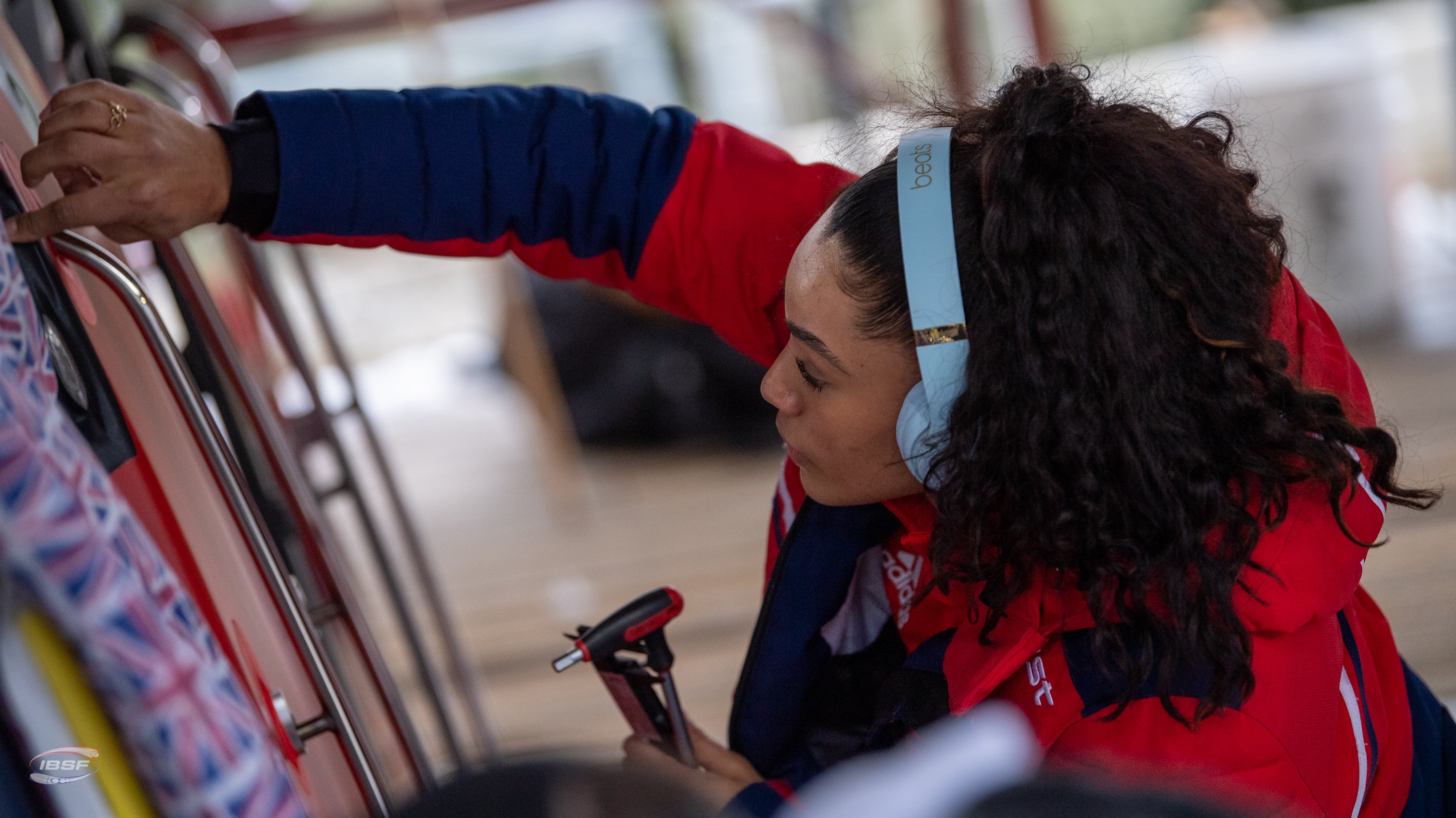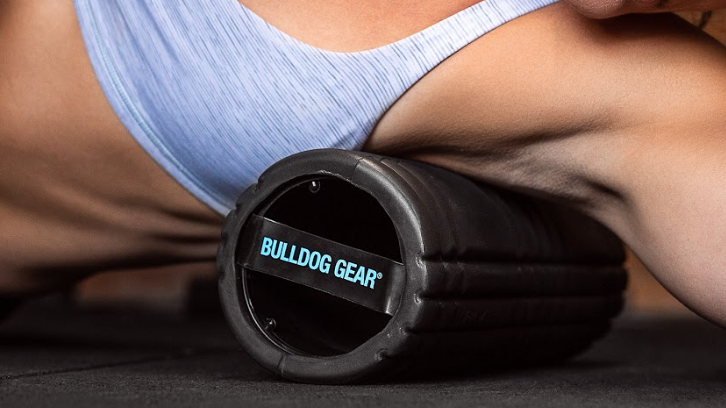|
18/02/2022 | Andrew Tracey Andrew Tracey is a long time collaborator with Bulldog Gear. A coach, writer and current fitness editor of Men’s Health Magazine, he has been in and around the fitness industry for the past 16 years. Having enjoyed and endured a number of disciplines from endurance racing, to strongman, to Crossfit AT enjoys getting neck deep in the practice just as much as the theory. |
If the last few years have taught us anything, it’s that making plans to have some kind of ‘recourse to fitness’ at home is more than just an investment in your health— but an insurance policy against gym closures, transport issues and those times when life just gets in the way of your best laid plans.
We’ve long espoused the benefits of having access to the ‘minimum effective dose’ of fitness equipment at home; our ‘You Are Not Your Gym Membership’ programme was aimed at progressively building your kit supply (with effective programming, to boot), leaving you with a reliable kit cache, to keep the wheels spinning on your goals, whatever life throws at you.
In this series of articles we aim to take a deeper dive, looking at the most effective ways in which you can take full ownership of your fitness journey, whatever your situation, and help you to plan and execute on the best investment you’ll ever make- your health.
In part two we’re going to look at your home training space from the bottom up, talking about a majorly overlooked aspect of building a home gym- the flooring; exploring your best options based on your space, goals and budget.

Considerations
Perhaps it’s because the flooring at your feet has no clear or intuitive effect on your training progress, or perhaps (and seemingly more likely) it’s because for most of us the idea of spending a day or two researching rubber matting is about as stimulating as counting the bristles on a paint brush; either way, it seems as though when planning a home gym, the flooring is the last thing on most people’s minds, when in fact, it should probably be the first.
The type of floor you decide on will dictate the type of space you end up with, how it can be used and perhaps even how long it can be used for.
Here’s a few things to consider before you strap on the knee pads and start throwing down mats.
How much protection does the floor below need?
I speak from personal experience when I say that despite the fact we use the term ‘concrete’ to donate something that is impervious to damage and completely unbreakable, this doesn’t necessarily bear out in reality. If you plan on dropping heavy dumbbells, bombing barbells or performing high rep *ahem* ‘touch and go’ deadlifts, then you need to take into consideration the thickness and integrity of the floor you plan on matting- even if it’s concrete.
Even garage gyms are not exempt. If your garage is of the ‘out-house’ style, built on top of earth in your garden for instance, it may only have a small base, which after a few thousand kilos of repeated contact could quickly crack, resulting in an uneven floor that’s problematic for lifting and a repair bill that’s even more problematic for your bank balance.
One solution is to build a suspended timber platform before you lay any matting, this will spread the load and ensure any damage is done to the (much more wallet friendly) wood. This option becomes all the more important if you’re lifting in a shed gym, which probably already has a suspended floor, by building an additional timber layer on top, you’re ensuring the shed itself remains intact.
A good compromise is to build just one small suspended area where you’ll perform the majority of your barbell lifting, leaving the rest as is. Essentially a lifting platform for the heavy work, saving you time and money, whilst giving you a pretty cool feature.
If you’re pretty sure your foundations are solid, but want to err on the side of caution, then opt for a thicker, 30mm tile, or our 30mm laminated performance tile especially designed to protect sub-floors from the rigours of impact damage.
How much sound deadening do I need?
Look, we all love to clang and bang. This is a fact. But do you know who probably doesn’t love it?
Your neighbours.
Bumper plates and hybrid bumper plates go a long way in mitigating the sound of raining barbells, but even then if you’re in close proximity to your neighbours, sleeping children or work-from-home spouses on important Zoom calls- further action may be needed.
Much of the same rules apply here as with protecting your floor (go figure, ‘less destructive’ also equals ‘quieter’), so a suspended floor or lifting platform can help to bring the decibels down a notch.
A thicker floor will also absorb more impact and thusly more sound, and again our 30mm laminated performance tiles beat out the rest in this regard with their specific, hardwearing design.
If all of the above still won’t cut the proverbial mustard, then additional, surplus matting that you can position under your plates when lifting to double down on the rubber is a tried and tested method of eliminating sound. In the same vein drop pads are an absolute deus ex machina in the war on noise.
Do I need ramped edges?
This one’s a lot easier to answer.
Put simply, if you have a garage gym with metabolic equipment or storage that can be wheeled around, you are more than likely going to be tempted to take at least part of your workout outdoors when the Great British Summer rolls around. Both days of it.
You may think that bumping an air bike up and over a 30mm mat sounds like less than a minor inconvenience, but trust me, pushing 100+ kilograms of plates on a wheeled bumper stacker, after a 40 minute mixed modal session is a very different experience; and picking hundreds of kilos of bumpers up, post workout, after you’ve upended the stacker on the ‘small’ 30mm edge could just be your villain origin story.
If you have access to the outside, invest in ramped edges from get go and thank us later.
Do I need astro turf now or in the future?
Two personal opinions I hold-
- The sled is one of the most under-utilised training tools in fitness.
- Training barefoot on turf is a great way to learn about and foster good mechanics.
I’m a full time turf apologist, previous to the matting I have in my own garage gym now the space was completely turfed, and I still have a 4m x 1m strip of turf adjacent to the matting on my patio for short, heavy sled work, burpees, barefoot swings and squats.
Even if you don’t plan on having any turf at all in your home gym space now, if you feel there’s a chance you may in the future, then selecting rubber matting that’s compatible or even interchangeable with astro turf tiles will save you a lot of work (and money) down the line.
Our 30mm tiles are available with a turf top layer, whilst still having the same integrating connection system as the rubber option, allowing you to replace one for the other quickly and efficiently.
Where The Rubber Hits The Road
By now you should have a rough idea of the problems your flooring needs to solve, let’s take a look at some of your options and how they shape up, so you can find the best ‘fit’ before you even have to touch the Stanley knife.
MORPHIC GYM TILE 1M X 1M X 18MM
If you’re working with a good underfloor and want to get as much coverage as possible per mat, these morphic gym tiles are a great option.
1 metre square tiles enable you to cover a space quickly and efficiently, whilst the smaller 18mm thickness makes cutting the mats to size easier, perfect if you have multiple corners, walls or fixed pieces of equipment to cut around.
The morphic tiles utilise an interlocking system, anchoring each tile to up to four other mats, meaning even with multiple cuts or edges that aren’t buffeted by walls, your flooring won’t move.
Despite the tiles being relatively large at a metre square, they’re lightweight at only 12kg, making the manual handling of the floor substantially easier.

BLACK THICK RUBBER GYM TILES 1M X 1M X 20MM
These 1 metre square tiles come in at 20mm thickness and boast a comparatively wallet friendly price tag, making them a great all rounder if you have no specialist requirements.
Useful for absorbing sounds as well as dissipating the force of impacts, they’re a favourite in many functional fitness spaces.
Although each tile cover a one metre square, making them effective at covering floor space quickly, each mat is ‘divided’ visually into 4 x 50cm squares which can be quickly cut to provide you with additional lifting ‘pads’ for further deadening of noise and damage mitigation, as we mentioned above.
If you’re working with a space that can’t be permanently floored, a small selection of these mats stored vertically can be laid to cover a large amount to lift on, quickly giving you a temporary lifting space. This is ideal if you keep your equipment in storage and lift in the garden, for instance.

BLACK THICK RUBBER GYM TILES 1M X 1M X 30MM
With all of the advantages of the above rubber gym tiles, but with an additional 50% thickness these mats are ideal for the budget conscious who still need additional sound deadening or impact absorption.
As above, you can quickly cut the mats along the ‘scored’ line to give yourself additional 50cm x 50cm ‘pads’ for additional protection.
Just two mats can quickly transform a patio or shared usage garage into an area for heavy barbell lifting, before being put back into storage.

30MM LAMINATED PERFORMANCE TILE
The 30mm Laminated Performance is our premium flooring solution. Specifically designed with acoustic deadening in mind, as well as impact mitigation, this flooring was conceived with the rigours of functional fitness in mind.
Although an impressive 30mm thickness, each individual mat is just 50cm x 50cm, making them incredibly easy to lay, ideal if you’re going to be undertaking the task alone. Surplus tiled can also be stored and quickly laid out for additional space or floor protection.
Utilising an integrated connecting system, anchoring each tile to up to four other mats, meaning even with multiple cuts or edges that don’t meet walls your flooring won’t move.
These tiles aren’t just easier and lighter to install but they’re also modular and cross compatible with our Astro Tile meaning you can now integrate a sled track as well.

30MM ASTRO PERFORMANCE TILE
As mentioned above, the astro performance tiles are cross compatible with our standard performance flooring, taking away any difficulties in installing a track area.
If you have storage space and a track is not something you would use all year round, but perhaps seasonally, you can easily interchange the tiles, completely redesigning your gym space, and the movements you are able to perform with ease.

We’ll be back with part three of this series, getting down to the real exciting stuff- picking your kit.



